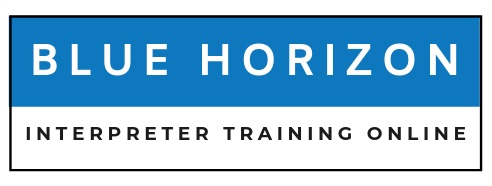Webinars
←Return to all webinar series
The Remote Interpreter (TRI) Webinar Series
Remote interpreting has suddenly become the most important pathway for the interpreting profession. Interpreters need to onboard as fast as possible, language service companies need to switch their services to video and telephonic, and clients need help understanding how to weave language access into their newly-online services.
We hope you enjoy this FREE webinar series, delivered by the team of authors of the forthcoming textbook: The Remote Interpreter.
Please note that while the live sessions were approved for 1 CCHI CE hour and 1 ATA CEP, certificates are not issued for viewing the recorded sessions.
#1 An Overview of remote interpreting
Live session delivered: April 9, 2020, 12:00-1:00 p.m. ET
Presenter: Katharine Allen, MA, Co-President InterpretAmerica
This webinar will start participants on the remote interpreting journey and provide a brief overview of the field. They will see where they fit into the remote interpreting “supply chain,” learn what kinds of platforms are available, see what’s involved in making the switch and gather tips for connecting with agencies that provide remote services. It’s the perfect introduction for the next three webinars in this free series that will go into more detail to help you add remote interpreting to your tool kit.
Learning objectives
After attending this webinar, the participant will be able to:
Identify the structure of how remote interpreting services are delivered.
Describe the main elements of OPI, VRI and RSI interpreting platforms.
List the steps to prepare to interpret remotely, including how to find, and communicate with, remote interpreting providers.
#2 Set yourself up for remote interpreting
Live session delivered: April 16, 2020, 11:30 a.m.-12:30 p.m. ET
Presenter: Caroline Remer, MA, Director of Global Language Access, Boostlingo
In this quick training module, you will learn the A to Z’s of setting up for your first remote interpreting session. We will go through proper home office set up, troubleshooting tips and tricks to get the best technology experience. Then we’ll look at best practices for OPI/VRI standards and professional performance. You will come away from this webinar with a checklist of items to go through each time you log on to a remote interpreting platform to take an assignment so that you are ready for anything that comes your way!
Learning objectives
After attending this webinar, the participant will be able to:
Go through a step-by-step process to set up for a successful OPI or VRI assignment using a standard current RI technology platform.
Conduct a session on a remote interpreting platform.
List and review common potential technical and logistic problems in remote interpreting and identify practical solutions.
Learning Objectives
After attending this webinar, the participant will be able to:
Identify key differences and similarities between face-to-face and remote interpreting modalities.
Practice fundamental elements of professional etiquette in remote interpreting.
#3 Basics protocols and professional etiquette in remote interpreting
Live session delivered: April 23, 2020, 11:30 a.m.-12:30 p.m. ET
Presenters: Tatiana Cestari, PhD, CHI, Director of Language Service Advocacy, MARTTI, and Sarah Stockler-Rex, CHI, Quality Assurance Manager, MARTTI
Remote interpreters, like face-to-face interpreters, need to follow protocols. They also need to practice professional etiquette.
This webinar identifies and discusses protocols that are unique to remote interpreting as well as those common in face-to-face interpreting. Such protocols and best practices include:
How to position yourself and your equipment.
What to include in a professional introduction and how to perform it.
Use of direct speech (first person) with some exceptions.
How to manage the flow of the conversation by turn-taking.
When and how to address misunderstandings.
How to manage hold times.
In addition, this webinar cover the fundamental elements of professional etiquette to help new remote interpreters meet professional standards for quality performance.
Learning Objectives
After attending this webinar, the participant will be able to:
List and address potential challenges in remote healthcare interpreting.
Explore strategies to acquire specialized medical terminology.
Develop the skills to clearly request clarification of unknown medical terminology.
Address the dynamics of intersecting fields within remote healthcare interpreting.
#4 guidelines for healthcare remote interpreters
Live session delivered: April 30, 2020, 11:30 a.m.-12:30 p.m. ET
Presenters: Tatiana Cestari, PhD, CHI, Director of Language Service Advocacy, MARTTI, and Danielle Meder, RID-NIC, Senior Director of Interpretation, Quality, United Language Group
Interpreting in a specialized field such as healthcare requires certain skills, protocols and best practices. The goal is to provide quality language access in healthcare. When you interpret encounters remotely, however, there are special considerations and challenges. You have to adjust to not being physically present and learn to leverage non-verbal cues and environmental dynamics.
This webinar will focus on identifying and providing effective solutions to potential challenges for remote interpreters in healthcare, for example: how to acquire specialized medical terminology, tips to become assertive, navigating overlapping fields (for example: legal, faith-based, educational, and customer service interpreting in healthcare) and working with various healthcare systems.



